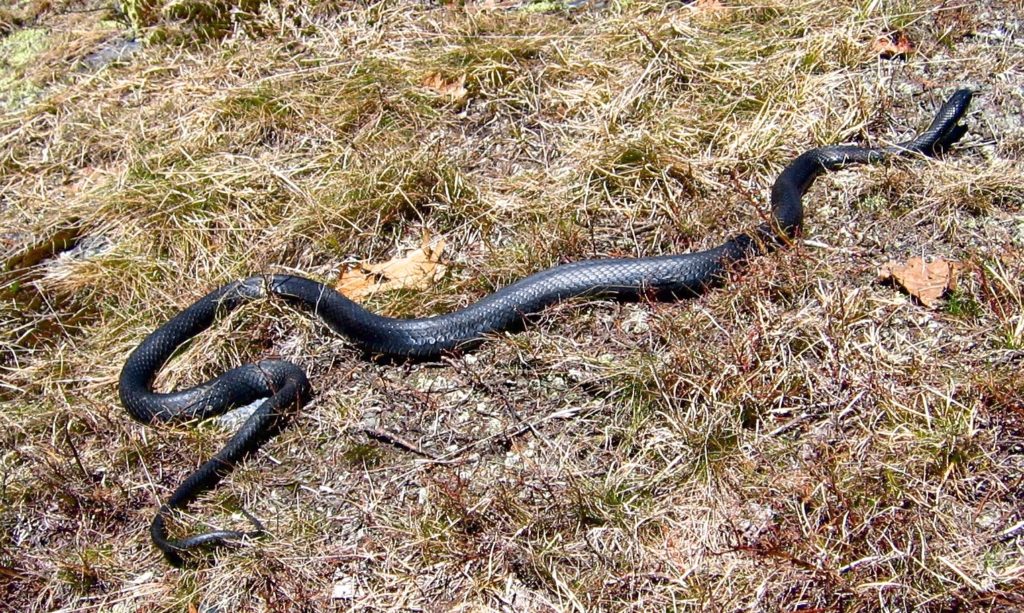

Closing entrances to rodent burrows make an area less attractive to snakes. In wooded, rural and riparian settings where snakes are common, their presence (and the presence of rodents) can be discouraged by eliminating stands of tall vegetation and removing piles of rock, lumber, and debris that might attract snakes to search for prey or to seek shelter. There are several steps to dealing with snake problems: making your property less inviting to snakes discouraging the presence of, or getting rid of, the rodents and other small animals they feed upon and dealing with any snakes that are already there. They are usually not far from an area of cover to hide in. Areas of water, brush, trash or wood piles, roadsides, swamps, and residential areas are also favored by this snake. Most racers prefer open, grassland type habitat where their keen eyesight and speed can be readily used, but they are also found in light forest and even semi-arid regions. Since racers will eat so many different small animals, they can be found in a variety of areas – wherever they can find food. If bitten by a racer, see a doctor even with nonpoisonous bites there’s a small risk of infection. They are not poisonous, but their bites can be painful. Rattling their tails among dry leaves, racers can sound convincingly like rattlesnakes. They are difficult to handle and will writhe, defecate and release a foul smelling musk from their cloaca. However, once cornered they put up a vigorous fight, biting hard and often. Racers can flee quickly from potential predators. Mexican racers are curious snakes with excellent vision, and will sometimes raise their head above the grasses they are crawling in to see their surroundings. Small prey items are often simply swallowed alive. Juveniles often consume soft-bodied insects, such as crickets and moths.ĭespite their scientific name of constrictor, they do not constrict to suffocate their prey, but hold it in place and subdue it. Mexican racer diet consists primarily of small rodents (including common household pests such as rats and mice), small birds, chipmunks, lizards, toad and frogs, and other snakes. Racers are fast moving, highly active, diurnal (active during the day) snakes. Their color gradually changes as the snake ages, becoming solid olive grey-green around a year old. As with all racers, the juvenile coloring is remarkably different: juveniles have a tan or cream colored body with brown or grey blotches. Adult mexican racers are slender, and are an olive gray-green, with a yellow underside. Average adult size is 2.5 – 5 feet long (66-157 cm). It is considered to be a subspecies of the Eastern Yellowbellied Racer the two subspecies are distinguished by the number of lip scales they possess. Mexican racers are found throughout Mexico, and in southern Texas. Here’s what you need to know when dealing with a possible racer snake on your property. After all, they love to eat rodents! But when they move inside (or even near to) our homes, often something must be done. The tan racer prefers habitats of pine flatwoods.Mexican Racer Snake (Coluber constrictor oaxaca)īelieve it or not, snakes can be great to have around. Mating occurs in the spring, and a clutch of approximately 30 eggs is laid typically in the month of May, to hatch mid summer. They are fast moving, and generally seek to use their speed to escape if approached. Their diet consists of a wide variety of prey, but primarily includes rodents, and lizards.

Like all racers, the tan racer is diurnal and highly active. They have large eyes, with round pupils, and excellent vision. The underside is typically gray or white, sometimes with yellow spotting. Juveniles have a pattern of dark brown dorsal blotches, which fade to solid tan at about a year of age. The tan racer, as its name implies, is typically a solid tan brown in color. It is endemic to the southern United States.

Coluber constrictor etheridgei, commonly known as the tan racer, is a nonvenomous colubrid snake, a subspecies of the eastern racer ( Coluber constrictor).


 0 kommentar(er)
0 kommentar(er)
